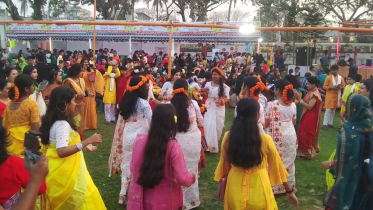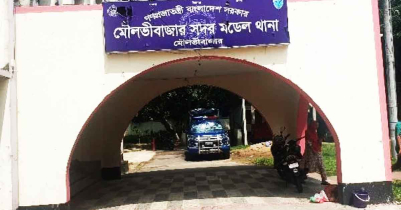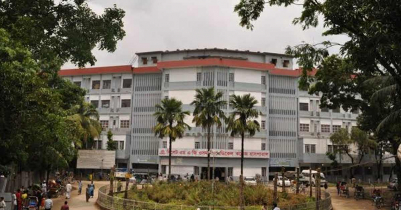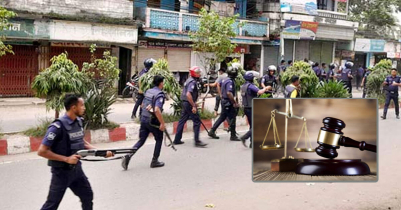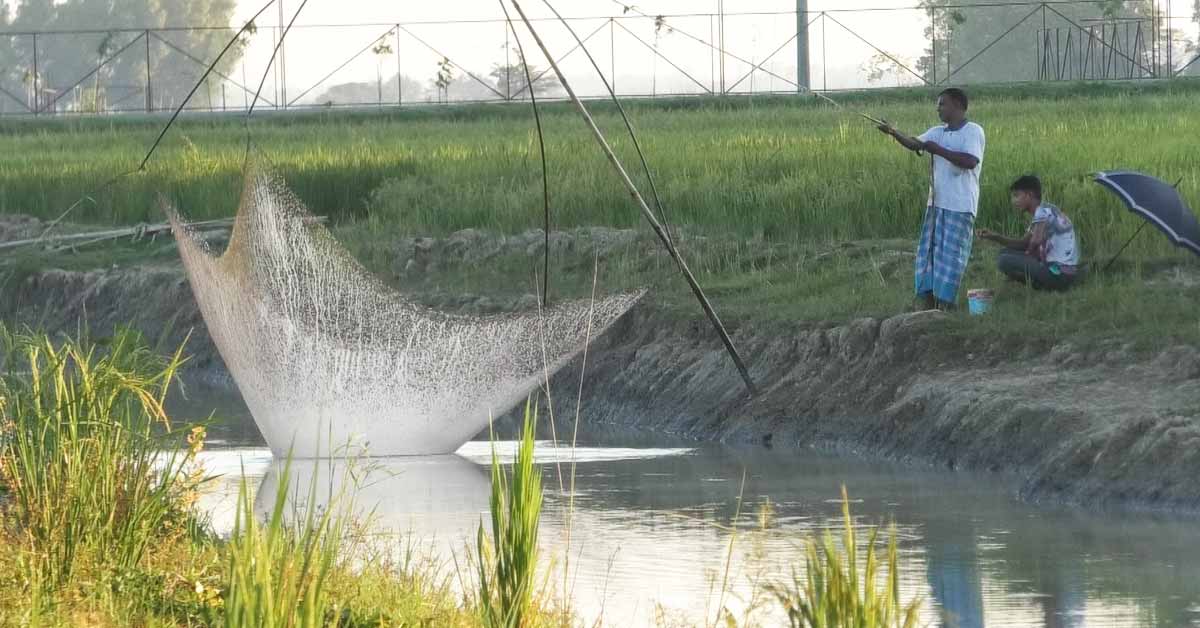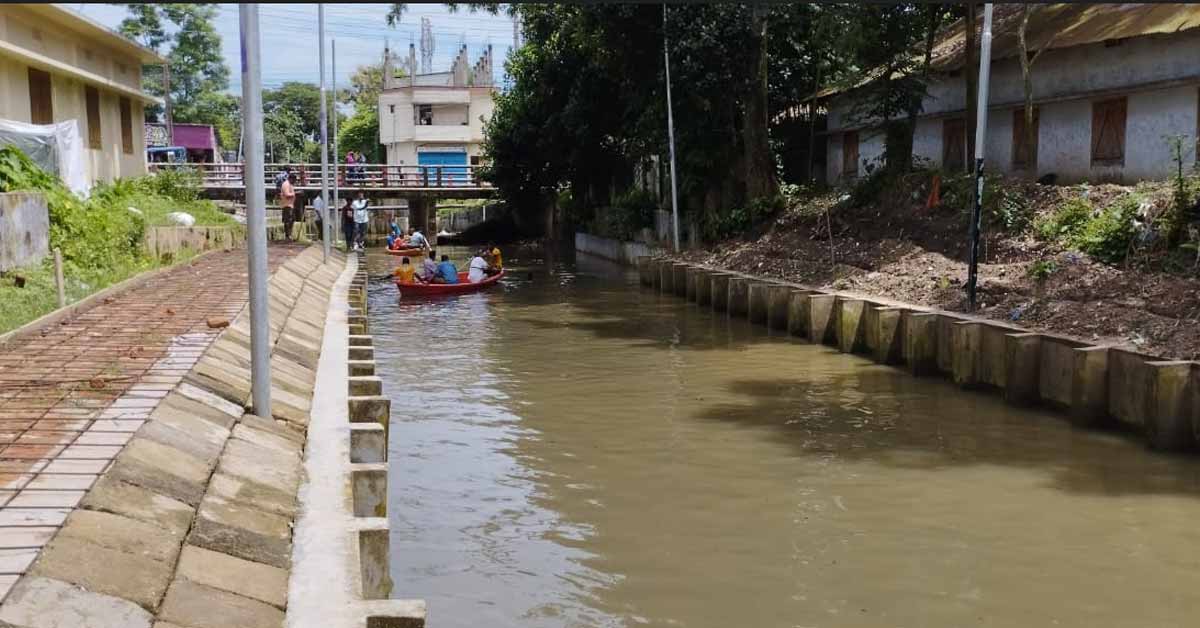Hasanat Kamal
Update: 23:44, 28 October 2025
How Are Tea Workers Living in the Land of Tea — Moulvibazar?
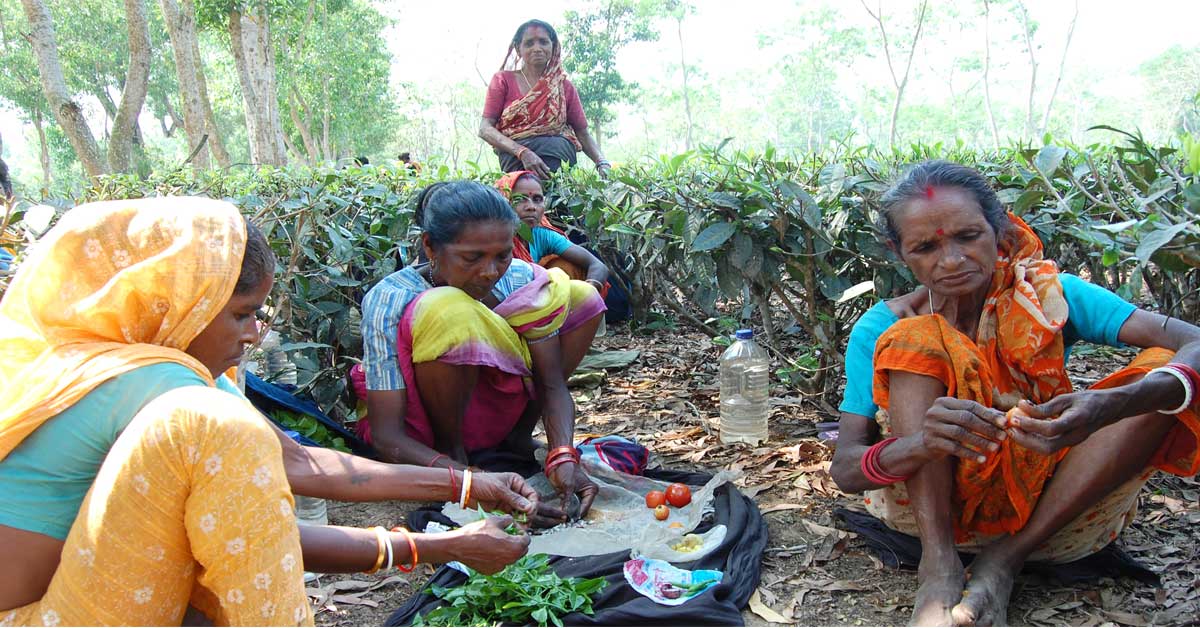
Tea workers eat a mix of tea leaves, chanachur, onions, and tomatoes during their break.
Out of 167 tea estates across Bangladesh, 90 are located in Moulvibazar district. The tea gardens are the iconic symbol and brand of this district — one of the country's major revenue-generating industries. But how are the tea workers, the true artisans of this industry, living? It is through their skilled hands that tea leaves are produced and the tea industry thrives!
Tea workers are always deprived. We have no proper homes. In the past, no one cared about us. This government has started giving allowances to many of us. Some have even received government-built houses. But the number of houses is far less than the number of people. Still, the MP said that no one in the tea gardens will remain without a house
Elections come and go in Bangladesh. Politicians make various promises of development — but how many of those promises are actually fulfilled? And how are the tea community people doing today? What is the state of their housing, land rights, education, wages, sanitation, and healthcare? Hasanat Kamal visited several tea gardens to explore these issues in this special report by Eye News.
Homes of Tea Worker Families
‘What can I say… rainwater used to pour into our house. We had to scoop the water out again and again. And in winter, the cold wind would blow straight into the room,’ said Sukumar Patra, a tea worker from Premnagar Tea Garden in Moulvibazar Sadar Upazila.
Sukumar shared that he used to live in a broken house. During the rainy season, water would leak through the roof, and on rainy nights, it was impossible to sleep. He had to spend the entire night clearing out the water. Sometimes, strong winds would even blow away parts of the roof. The suffering continued in winter when cold air would rush inside. On those nights, he used to light a fire in the yard to keep warm.
But now, Sukumar’s voice carries the sound of joy — he looks like a happy man. Speaking in a mix of Bangla and his community’s Hindi–Odia dialect, he said, ‘Before the election, the member of parliament (MP) came to our garden. He said he would give us houses and allowances. I received a brick-built house worth four 400,000 BDT. Our house has a bathroom and a kitchen. I receive an allowance, and my wife does too. We are happy.’
When I spoke with Sukumar, it was midday in the Bengali month of Bhadra — around 1 PM. At one end of the tea garden, the sun was shining, while the other end was covered by clouds with light rain falling. This is typical of the Bhadra season- rain on one side, sunshine on the other. The fate of the tea workers is just like that Bhadra afternoon — some receive government houses and allowances, while many others remain deprived. Only a handful of fortunate families have received government-built homes.
Sukumar, now over sixty, is physically disabled — his right arm was paralyzed in an accident. His wife is also paralyzed, with one arm disabled. Both receive government allowances from the Department of Social Services. Their brick-built house was constructed under the Social Welfare Council’s program, costing 400,000 BDT. Theirs is the story of one of the few fortunate tea worker families.
Life of Tea Workers
‘Tea workers are always deprived. We have no proper homes. In the past, no one cared about us. This government has started giving allowances to many of us. Some have even received government-built houses. But the number of houses is far less than the number of people. Still, the MP said that no one in the tea gardens will remain without a house’, said Shefali Patra, wife of Sukumar Patra.
For most tea worker families, however, fortune has not smiled so kindly. While Sukumar Patra and his wife Shefali Patra spoke with peace of mind, nearby a woman tea worker named Sananda Kar was walking quickly with firewood balanced on her head, muttering to herself.
She said, ‘We vote when elections come, but no one looks after us or gives us homes. There’s no job in the garden either. We survive by selling this firewood. Some days we eat, some days we can’t manage food. Who cares about us?’
Walking behind her was another tea worker, Padmarani Modi. She called out to Sananda, ‘Hey, don’t you get that five-thousand-taka (500,000 BDT) allowance?’
Sananda replied, ‘Oh, sister, can anyone live on just five thousand taka (500,000 BDT)?’
In Rajnagar Tea Garden of Rajnagar upazila, Moulvibazar district, women workers were working in Line No. 2, while a few steps ahead, men were busy inside the factory. There, I spoke with labor leader Babul Pasi.
He said, ‘Tea workers are always deprived. We have no homes. Earlier, no one cared. This government is giving allowances to many, and some have received government houses. But the number of people far exceeds the number of houses built. Still, our MP said no one in the garden will remain homeless.’
Exiled in Their Own Land
In Moulvibazar district, more than one lakh (100,000) families—comprising around seven to eight lakh (700,000–800,000) people—belong to the tea worker community. None of them own land. They live in small houses built on tea estate property. Most of these houses are made of mud or bamboo; some are dilapidated and leak during the rain. In many homes, there’s no relief from the scorching sun during the day, and in winter, cold winds pierce through the walls. Yet, the picture is slowly changing—semi-pucca (half-brick) and even fully brick-built houses with proper boundaries can now be seen in several tea estates.
Among the seven upazilas (subdistricts) of Moulvibazar, six have been officially declared `free of landless and homeless families’ under the Ashrayan-2 Project (Category A). Only parts of Kamalganj upazila remain. However, despite this declaration, not a single one of the district’s one lakh tea worker families owns land. The vast majority have not received government-built houses—only a few fortunate families have. Thus, the district was declared free of landlessness and homelessness while leaving behind nearly 700,000–800,000 tea workers without land or homes.
When asked about this at a press conference before the inauguration of Ashrayan housing units, Moulvibazar Deputy Commissioner Dr. Urmi Binte Salam said, ‘A special project will be taken up for tea workers.’ On 3 September 2022, during a video conference held at the Patrokhola Tea Garden field in Kamalganj, Prime Minister Sheikh Hasina announced that every tea worker family will receive a house with land. ‘This is a special project for the tea community,” she said. ‘Once implemented, no tea worker family in Bangladesh will remain homeless.’
The Deputy Commissioner further stated that even now, though on a limited scale, houses are being built for tea workers under the Ashrayan-2 project, the Department of Social Services, and small ethnic community projects.
Additional Deputy Commissioner (Revenue) Abdul Haque told eyenews.news, ‘We are currently doing background work for the tea workers’ housing initiative.’
Habibur Rahman, Deputy Director of the Department of Social Services in Moulvibazar, said, ‘A total of 233 tea worker families have received brick-built houses in Moulvibazar district. Each house has two rooms, a bathroom, and a kitchen, costing Tk 400,000 each.’
According to the district administration, beyond the Department of Social Services, other government projects have also provided houses to tea workers as gifts from the Prime Minister. The process is ongoing, but there are no comprehensive statistics on how many families have received houses so far.
Mohan Robidas, an activist for tea workers’ rights, told eyenews.news, ‘We want to trust the Prime Minister. No one else can do this but her. She has provided homes and land to homeless people across the country, and we believe she will do the same for tea workers. One day, no tea worker will remain landless—everyone will have their own home.’
Ramvajan Kairi, former General Secretary of the Tea Workers’ Labor Union and current Vice Chairman of Kamalganj Upazila Parishad, has long advocated for tea workers’ rights. Regarding housing and land ownership, he said, ‘We are looking toward the Prime Minister. She is a person who keeps her word. Whatever she says, she fulfills. We hope that in the next national election, tea workers will be able to vote from their own homes. If that’s not possible before the election, at least a formal announcement would bring them satisfaction.’
Ramvajan added, ‘The Department of Social Services is building houses for tea workers under the Social Welfare Council, but they are only handing over the house keys—not ownership documents. As a gift from Sheikh Hasina, there should at least be a certificate or allocation paper along with the key. Without that, there’s discontent among the workers.’
Education of Tea Workers’ Children
What is the state of education in the tea gardens? To explore this, the reporter spoke with activists, teachers, education officials, experts, local guardians, and students.
In Moulvibazar district’s Rajnagar upazila lies the Mathiura Tea Garden. It was around noon — the sound of the school bell echoed from a distance. Upon entering the garden, one comes across the Mathiura Government Primary School. The sight is heartwarming — groups of children carrying books walk toward the school from nearby hills and labor quarters. Others, having finished their classes, run home in joy. The chatter of schoolchildren mixes with the chirping of birds hidden among the tea bushes and shade trees, creating a harmonious melody across the green tea fields.
Head Teacher Arjun Tanti said that in the morning shift, pre-primary, first, and second-grade classes are held, ending at 12 p.m. The second shift covers classes three to five.
Shrabonti Goala, who teaches the fourth-grade class, told eyenews.news, ‘I studied in this very school, and now I teach here. Many others like me in different tea gardens are also teaching in the schools where they once studied. Some have even secured good jobs — some are bankers now.’
When asked about his dreams, fourth-grader Rabi Nuniya said, ‘I want to study and become a doctor when I grow up. I don’t want to work in the tea garden.’ His classmate Kankoli Kurmi, sitting beside him, added, ‘I also want to be a doctor — to serve the people of our tea gardens.’
Head Teacher Arjun Tanti reported that 97–98% of children in his school’s catchment area are enrolled in education, and the dropout rate is only 2–3%, leading to a noticeable rise in literacy in the area.
How Much Progress Has Been Made in Education?
Eyenews.news spoke with tea workers’ rights activist Mohan Robidas, who completed his Master’s degree at the University of Dhaka. He is the son of a tea worker from Alinagar Tea Garden in Kamalganj upazila and currently works for an NGO.
Mohan expressed mixed feelings about the educational progress in tea gardens. ‘Children of tea workers have advanced much compared to before,’ he said. ‘Still, the tea community remains behind in education. There has been noticeable improvement over the past six to seven years — more boys and girls are now pursuing higher education. This progress really started around 2014, when I was studying at Dhaka University. I used to visit different gardens to motivate the children. The government also wants tea workers’ children to become educated. Many are now studying at various universities. But still, the overall literacy rate in the gardens is low — probably not even 50%. Because of poverty, parents can’t afford both food and schooling for their children. They must ask themselves — will they feed their children, or send them to school?’ said this brilliant and determined son of a tea worker.
BCS Cadres, Doctors, Teachers, and University Graduates from Tea Worker Families
According to information provided by Mohan Robidas, three individuals from the tea worker community in Moulvibazar have passed the BCS (Bangladesh Civil Service) examination. Among them, Jewel Kairi and Shipa Yadav from Alinagar Tea Garden joined the education cadre, while Niyoti Kairi from Noonchhara Tea Garden joined the administration cadre. There are also five to six doctors, and many are working as bankers or in private sector jobs.
Around 20 students from tea worker families have studied or are currently studying at the University of Dhaka, where they benefit from a 1% quota. Another 15 to 16 students have studied at Shahjalal University of Science and Technology (SUST). In total, 40–45 students from tea worker families have completed higher education at universities and medical colleges, while another 50–60 are currently pursuing their studies.
Mohan Robidas noted, Still, not all tea gardens have government primary schools — perhaps only about 70% do. And there are almost no secondary schools.’
Former president of the Labor Union, Ramvajan Kairi, said, ‘The literacy rate in tea gardens has increased, but there are still questions about the quality of education. When tea workers’ children compete nationally, they often can’t keep up. They get fewer opportunities in universities.’
He added, ‘Across the country, there are around 240 tea estates. Because most of their schools are not government-run, they don’t receive government benefits like stipends. Yet the tea garden population is increasing. Every tea garden should have a government primary school. Also, seven valleys should have technical schools and colleges — this would bring a revolution in the tea gardens by creating employment opportunities. I’ve heard that a directive has been issued to establish schools in every tea garden.’
Primary Schools in Tea Gardens
Kisholoy Chakraborty, Assistant Primary Education Officer of Moulvibazar district, said that out of 90 tea gardens, 62 have government primary schools serving 12,441 students. Additionally, 70 NGO-run primary schools provide education to another 9,750 children from tea worker families.
Kisholoy Chakraborty told eyenews.news, ‘When I was the Upazila Education Officer in Sreemangal, there were very few schools in the tea gardens before 2010. Many schools were established after 2010.’
He added, ‘Major initiatives have been taken to expand education in the tea gardens. New schools are being set up, and those gardens without schools will soon have them.’
Jasim Uddin Masud, Moulvibazar’s District Children’s Affairs Officer and a child development researcher who has worked extensively on expanding education in tea gardens, said, ‘The current literacy rate in Moulvibazar is 75.74%, which is higher than the national rate of 74.66% (2022 statistics). In 2011, according to the census, the literacy rate in the district was only 51.1%.’
He explained, ‘At one time, the overall literacy rate in Moulvibazar was low mainly because of the tea gardens — literacy there was below 20%. But now, the situation has changed drastically. Almost every child in the tea gardens goes to school. Though we don’t have exact statistics, the current literacy rate in tea gardens is estimated to be 40–45%, certainly not less.’
Jasim Uddin further said, ‘Since 2009, under the initiative of the Ministry of Women and Children Affairs and implemented by the Bangladesh Children’s Affairs Academy, efforts have been made to expand pre-primary education in the tea gardens. To eradicate illiteracy, we held regular meetings with parents, local leaders (panchayat members), and garden authorities — 10 meetings per year in each of 34 tea gardens. We also set up day-care centers in 15 gardens. These initiatives have worked remarkably well — school attendance rose, productivity in tea estates improved, and education began to spread widely in the gardens, with financial and technical support from UNICEF.’
He added that in 2008, UNICEF conducted a nationwide survey based on five indicators — literacy rate, child mortality, maternal mortality, sanitation, and personal hygiene. It identified 12 underprivileged districts, where Bhola and Sunamganj ranked the lowest, and Moulvibazar ranked third from the bottom.
Jasim Uddin concluded, ‘Now, organizations like the Islamic Foundation, the Bureau of Non-Formal Education, and many NGOs are working in the tea gardens. Moulvibazar has advanced significantly in education. The tea gardens are now in a much better position — their rising literacy rate has even improved the overall statistics for the district.’
Secondary Schools and Colleges in Tea Gardens
At Premnagar Tea Garden in Moulvibazar Sadar Upazila, I spoke with Shiuli Patra, a seventh-grade student. Every day, she walks part of the way and takes an autorickshaw to a nearby high school in Giasnagar for her studies. She said, ‘The school is far away. I can’t go every day. It costs 100 taka for transportation. We want a school inside our tea garden.’
While plucking tea leaves, worker Anima Patra said, ‘We really need a high school in our garden. Then our children could study properly. The government has done a lot for us already, but we are requesting our mother, Sheikh Hasina, to give us a school.’
Activist Mohan Robidas said, ‘There are still no secondary schools in the tea gardens. Without access to education, how can the children of tea workers become educated?’
When asked how many secondary schools are available in tea garden areas of Moulvibazar, District Education Officer Fazlur Rahman said that although there are no schools located directly inside tea gardens, there are 29 secondary schools in areas heavily populated by tea workers. Among them, there are 2 in Sadar Upazila, 4 in Rajnagar, 7 in Sreemangal, 12 in Kamalganj, and 4 in Baralekha, where children from tea gardens can study.
Fazlur Rahman told eyenews.news, ‘In Sreemangal, Kamalganj, and Juri upazilas — where most tea estates are located — the results of public examinations are comparatively poor, which affects the overall district performance. However, things have improved significantly. At one time, the literacy rate in tea gardens was below 20%. Now it’s around 50%. The government is taking steps to ensure that every child in tea gardens can go to school. Gradually, all tea gardens will have schools.’
Meanwhile, in Barmachhara Tea Garden of Sreemangal Upazila, a government high school is being constructed under the initiative of local Member of Parliament, Deputy Speaker Dr. Abdus Shahid, at a cost of 250 million taka (25 crore). The project is in its final phase. Once completed, children from nearby tea gardens will be able to attend school directly.
Tea Workers’ Wages
Before 2009, tea workers used to earn 28 to 30 taka per day. Now, their daily wage is 170 taka, but it took years of protests — and even the intervention of the Prime Minister — to achieve this increase. Yet, in today’s inflation, can families really survive on that? eyenews.news spoke directly with workers and labor leaders to understand their situation.
From 32.50 Taka to 170 Taka
What does the tea workers’ wage structure look like? How has it changed over the years?
Ramvajan Kairi, former General Secretary of the Labor Union, explained: ‘Every two years, wages are revised through agreements between the tea estate owners and the workers’ representatives.’
He said, ‘Before 2009, the daily wage was 32.50 taka. In 2009, it increased to 45–48 taka. In 2011, without a formal agreement, wages were raised internally by 7 taka, reaching 55 taka. In 2013, another informal raise brought it to 62 taka. In 2014–15, through a formal contract, it was increased to 85 taka. In 2017–18, the new contract fixed the wage at 102 taka. In 2019–20, it rose to 120 taka. Finally, in 2021, following prolonged protests and the Prime Minister’s intervention, the wage was set at 170 taka.’
Ramvajan Kairi added, ‘Although there was an understanding between owners and workers about the 170-taka wage, a final written agreement was never signed. Still, workers are currently receiving 170 taka per day.’
‘How Can a Family Survive on 170 Taka a Day?’
At Line No. 3 of Premnagar Tea Garden, worker Shobita Kairi was plucking tender tea leaves — two leaves and a bud — on a rainy day. While working, she said, ‘My parents used to earn 8 to 10 taka a day. We once earned 28 to 32 taka. Now it’s 170 taka, after many movements. But this money isn’t enough. Everything is expensive — we can’t manage with this.’
Another worker, Rita Voumik, said, ‘There are seven people in my family, but only one permanent worker. How can we survive on 170 taka a day? Should we buy rice or fish and vegetables — or send the children to school?’
Speaking to eyenews.news, labor leader Ramvajan Kairi, who is also the Vice-Chairman of Kamalganj Upazila Parishad, said, ‘When this government came to power in 2009, wages were 32.50 taka. Now they are 170 taka — but that’s still not enough. In the 2021–22 fiscal year, we demanded 300 taka. The Prime Minister’s personal intervention made it 170; otherwise, the owners might have settled at 150. But living costs have gone up. To survive now, daily wages must be at least 350 taka. We are demanding this increase.’
According to workers, under the current structure, they receive 170 taka for plucking 20 kilograms of tea leaves. For each additional kilogram, they get 4 taka, and 5 taka per kilogram for early-morning picking. During the peak season, a worker can earn 300 to 500 taka per day, depending on production, but income drops sharply in the off-season.
In addition to wages, the estate authorities provide subsidized rations, such as flour, wheat, or rice, at nominal prices to the workers.
Population of Tea Workers in Bangladesh
How many tea workers and members of the tea community live in Bangladesh? There is no precise official statistic, and opinions vary.
According to the Statistical Handbook on Bangladesh Tea Industry 2019, there are 103,747 permanent tea workers and 36,437 temporary workers in the country. The total tea community population is 472,125.
However, data from the Bangladesh Tea Workers’ Central Committee (Labor Union) suggests that the number of people in the tea community is around 750,000.
Former General Secretary of the Labor Union Ramvajan Kairi said, ‘The number of regular tea workers is about 150,000, but the number of temporary and unemployed tea workers is nearly double that.’
Tea workers’ rights activist Mohan Robidas said, ‘According to my estimate, there are about 1.2 to 1.3 million (12 to 13 lakh) tea workers in the country. Among them, around 350,000 to 400,000 are permanent, temporary, or unemployed workers.’
Benefits and Allowances for Tea Workers
At Premnagar Tea Garden in Moulvibazar Sadar Upazila, it was 2 p.m. Female workers had just finished plucking leaves and were sitting in the ‘golghar’ (resting shed) for lunch.
Their meal consisted of fresh tea buds, small pieces of bread or puri, chanachur, and sometimes singara or dalpuri, with a cup of liquor tea mixed with salt.
When asked about it, the workers, gathered together, smiled and said, ‘Dada, this is our lunch. Will you eat with us?’
Thirty-year-old worker Rebonti Karmakar said, ‘We are tea workers, dada. This is our life.’
When asked whether they receive any allowance from the government, Anima Patra replied, ‘Yes, we do. Sheikh Hasina is our sister — Sheikh’s daughter, our mother. She gives us 5,000 taka every year.’
Hearing this, Aakhi Kor, another worker sitting nearby, laughed and said, ‘Tell your sister to increase the amount!’
Yet Anima seemed genuinely happy. ‘That 5,000 taka helped us a lot,’ she said. ‘I bought ducks and chickens with it. I’m using the money for my children’s education.’
Padmarani Modi added, ‘I bought a goat. Who else gives us this money?’ The women, though earning very little, expressed their satisfaction and gratitude.
When asked about government financial assistance, Moulvibazar District Social Services Officer Habibur Rahman told eyenews.news, ‘Under the Department of Social Services’ ‘Livelihood Improvement Program,’ 35,000 tea worker families in the district receive an annual allowance of 5,000 taka each. In addition, under the ‘Small Ethnic Community Project,’ children of tea workers receive 4,000 taka each as financial assistance. Besides this, tea workers are also eligible for old-age allowances, disability allowances, and widow allowances. Freedom fighter tea workers receive the government’s freedom fighter allowance.’
He further said that in Moulvibazar district, 64,656 people receive old-age allowances, 22,231 receive widow allowances, and 28,724 receive disability allowances — including members of the tea worker community.
Healthcare in Tea Gardens
What kind of healthcare services do tea workers receive in the tea gardens? To find out, eyenews.news spoke with the Civil Surgeon of Moulvibazar and several tea workers.
Rupa Bauri, a worker from Mathiura Tea Garden, said with frustration, `Whenever we get sick, they just give one strip of paracetamol at the garden dispensary. What else will they give us?’
Babul Pasi, a labor leader from Rajnagar Tea Garden, explained, ‘Garden dispensaries provide basic medicine and first aid. If the condition gets worse, we have to go to the Upazila Health Complex or the District Hospital. For serious illnesses, we must go to Sylhet or even Dhaka. However, some tea estates have their own small hospitals that provide delivery services for pregnant women and other healthcare. There are also nearby community clinics providing basic healthcare, but not all gardens have these facilities.’
Dr. Chowdhury Jalal Uddin Murshed, Civil Surgeon of Moulvibazar, told eyenews.news, ‘Tea workers and their families receive treatment alongside other patients at the district’s 250-bed General Hospital and at the six Upazila Health Complexes. We are very sincere and committed to their healthcare.’
Sanitation System in Tea Gardens
What is the sanitation situation like in the tea gardens?
During a visit to various areas of Mathiura Tea Garden in Rajnagar Upazila, it was observed that while many families now have hygienic latrines, a large portion of the population still use open spaces for defecation. Some families even use the sanitary latrines provided by the government for storage purposes instead of proper use.
Khaleduzzaman, Executive Engineer of the Department of Public Health Engineering in Moulvibazar, told eyenews.news, ‘We have installed sanitary latrines and wash blocks in tea gardens. Tube wells have also been provided to ensure safe drinking water.’
At Mathiura Tea Garden, Konok Goala, a resident, said, ‘Nowadays, many tea worker families have sanitary toilets. The government has also provided many of them. But not everyone is used to them yet — some still use open fields. It will take time, but slowly, things will improve.’
Total Number of Tea Gardens in Bangladesh
According to data from the Bangladesh Tea Board, there are currently 167 tea gardens in the country.
Among them, 90 are located in Moulvibazar district, and about 80 percent of these are first-class gardens.
Additionally, there are 25 gardens in Habiganj, 19 in Sylhet, 22 in Chattogram, 1 in Rangamati, 8 in Panchagarh, and 1 in Thakurgaon.
However, according to former General Secretary of the Labor Union Ramvajan Kairi, including small and branch estates, the total number of tea gardens in Bangladesh stands at around 240.
How Much of the Promises Have Been Fulfilled
What promises did local Members of Parliament and the government make during previous elections, and how much have been fulfilled?
Tea workers’ rights activist Mohan Robidas told eyenews.news, ‘Election promises are essentially part of the election manifesto. It would be false to say that none of the promises for tea workers have been implemented. I would say 30 to 40 percent of them have been realized. But the issues of land ownership and housing rights for tea workers remain unresolved. In the education sector, there is still a long way to go.’
Former Labor Union General Secretary Ramvajan Kairi said, ‘The Awami League is the only party that explicitly mentioned tea workers in its election manifesto. The party genuinely wants to do something for the tea workers, which is highly commendable. As long as Sheikh Hasina is in power, the workers’ sorrows and frustrations cannot take root. Before the election, she should issue a directive or declaration about housing — that alone would make us happy.’
Nesar Ahmed, Member of Parliament for Moulvibazar-3 (Sadar–Rajnagar) and President of the District Awami League, said, ‘Father of the Nation Bangabandhu Sheikh Mujibur Rahman gave tea workers the right to vote, and his daughter, Prime Minister Sheikh Hasina, gave them the right to food. In 2009, tea workers earned only 32 taka a day — now they earn 170 taka. Once, the literacy rate in tea gardens was below 20 percent; now it has reached 50 percent. I personally look after the tea workers in my constituency. They are receiving old-age, widow, and other allowances. Under the Livelihood Improvement Program, each labor family receives 5,000 taka annually. Roads, schools, electricity, and healthcare services have been provided. We are doing everything possible for them — no other government has done this, nor will any future one do so.’
The Moulvibazar-4 (Sreemangal–Kamalganj) constituency, which includes many tea gardens, has been represented for six consecutive terms (over 30 years) by former Chief Whip, Deputy Speaker Dr. Abdus Shahid, MP.
He said, ‘Since the Awami League came to power, it has taken active steps to raise tea workers’ wages and fulfill their long-standing demands. To make them self-reliant, the government is providing various forms of financial assistance. Alongside continuing this support, the government has also undertaken several new programs for their welfare. I regularly visit tea gardens and listen to their problems. We are providing them with beautiful, durable houses free of cost. In Sreemangal and Kamalganj, more than 50 schools have been upgraded or newly established as government primary schools. Secondary schools are also being built. In Bormachhara Tea Garden, we are constructing a modern secondary school building at a cost of 25 crore taka — the project is nearly complete.’
Md. Shahab Uddin, Member of Parliament for Moulvibazar-1 (Barlekha–Juri) and Minister of Environment, Forest and Climate Change, said, ‘The present government is working to improve the living standards of tea workers. Just as they deeply love Prime Minister Sheikh Hasina, she too sincerely loves them. She listens carefully to their concerns. Under her leadership, the living conditions of tea workers have greatly improved. Their children are now receiving education — some have even become BCS cadre officers and are employed in various government departments. Tea workers are the lifeblood of the tea industry. Schools will be established in all tea gardens that currently have none. The lifestyle of tea workers has already changed significantly and will continue to improve — the government is working toward that goal.’
Note: This article was originally published in Bengali on eyenews.news and has been translated into English by the author.
Read the story in Bengali: চা শ্রমিক জীবন - চা শিল্পের কারিগর চা শ্রমিক পরিবারের জীবন গল্প
- Sylhet city polls: the winning councilors of 42 wards
- The new DC of Moulvibazar Dr. Urmi Binte Salam
- Anwaruzzaman returned to Sylhet
- The new DC of Sylhet Sheikh Russell Hasan
- Dr. Urmi Binte Salam joins as new DC of Moulvibazar
- `Special train` will run on Sylhet-Chandpur route from today
- International cricket returned to Sylhet after three years
- Sylhet City Corporation Election will be held 21 June
- Former state minister Ebadur Rahman Chowdhury d i e s
- Moulvibazar DC Mir Nahid Ahsan transferred




